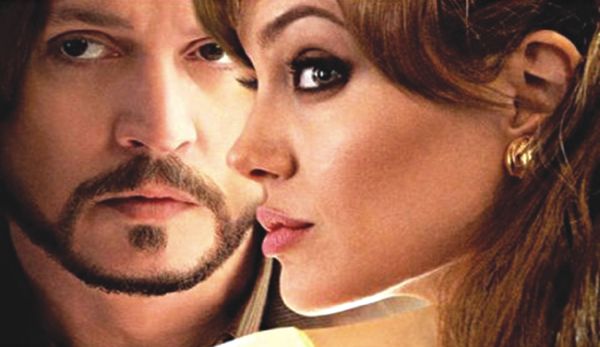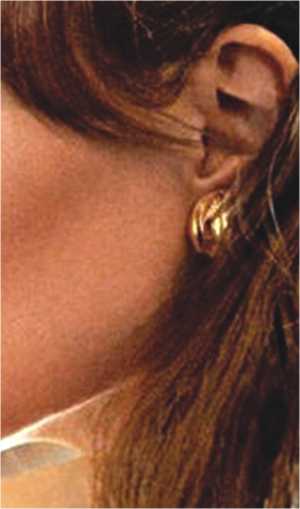
Inside
Original Forum |
| Readers' Forum |
| Our War Crimes Trials: Making it Happen -- Ziauddin Choudhury |
| Putting an End to Fatwa Violence -- Arafat Hosen Khan |
| Girl on Girl: How we perpetuate abuse and violence -- Shahana Siddiqui |
| The Price of Violence -- Interview with Dr. Julia Ahmed |
| Equal but Different: Gender discrimination in immigration rules -- Farah Huq |
The Crime Never Considered a Crime --- AZMM Moksedul Milon |
Women in the Workplace: Gender-specific challenges in the corporate world --- Olinda Hassan |
Women's sports in Bangladesh -- An Encouraging Year -- Naimul Karim |
| Her vindication, he supports -- Shayera Moula |
| An Aconcaguan Birth --Wasfia Nazreen |
| On Objectification of Women in Mainstream Hollywood Movies --Rifat Munim |
| Silence of the Voices --Zoia Tariq |

On Objectification of Women in
Mainstream Hollywood Movies
RIFAT MUNIM divulges the subliminal messages surrounding women and sexuality in Hollywood films.
We're all living in America
America, America
We're all living in America
America is wonderful.
('America', Rammstein)
This is the refrain of a song by the German heavy metal band Rammstein. But one has to watch the music video to grasp its full potential. The song makes a compelling case that Hollywood films have permeated through all continents, all races and all societies in the world. In the music video, a variety of races from Asia and Africa -- Muslims, Sikhs, Hindus, Buddhists, indigenous groups as opposed to civilised ones -- are all eating American pizza and burgers, drinking Coca Cola and watching an American film. The song, in fact, mocks the fact that technologically advanced Hollywood films have not only made their way through to the furthest corner of the world but they have carried with them certain American products. By launching this satiric diatribe, the song attempts to reveal the role Hollywood film plays in realising America's political goals. Towards the end, it says,
We form a nice round (circle),
I'll show you the right direction,
to Africa goes Santa Claus,
and near Paris stands Mickey Mouse.
 With American films flow in not only Coca Cola and American pizza or burgers but also certain values such as celebration of Christmas with Santa Claus. If it be so, then it must have serious implications for us Bangladeshis too because more and more of our viewers are receiving Hollywood films with warmth. A good number of them have long become used to these films. Warm reception of these movies is sure to bring about visible changes to our culture and economy as a result of interaction with our viewers. The nature of interaction and the resultant changes depend entirely upon what the movies are really about, what subjects they deal with and how they present those subjects. In a globalised world where Hollywood film has made a ubiquitous presence, a critical understanding of its role in international context soon brings to light its underlying political scheme.
With American films flow in not only Coca Cola and American pizza or burgers but also certain values such as celebration of Christmas with Santa Claus. If it be so, then it must have serious implications for us Bangladeshis too because more and more of our viewers are receiving Hollywood films with warmth. A good number of them have long become used to these films. Warm reception of these movies is sure to bring about visible changes to our culture and economy as a result of interaction with our viewers. The nature of interaction and the resultant changes depend entirely upon what the movies are really about, what subjects they deal with and how they present those subjects. In a globalised world where Hollywood film has made a ubiquitous presence, a critical understanding of its role in international context soon brings to light its underlying political scheme.
This narrative form works in much the same way as literary narratives. In the mode of narration, a norm of representation is formed around the spheres of class, race and gender. Just consider the Star World TV serial The Big Bang Theory which is about four young, emerging scientists in the US. Two of them, Raj and Howard, belong to ethnic minority groups. Raj is of Indian origin and Howard of Jewish descent. In the serial, they are represented as frail and frivolous which is why they are made objects of constant bullying from the other two comparatively smart American scientists. It is noteworthy that a great deal of laughter depends on their frivolity. In this particular instance, a norm of representation has been formed around the sphere of race. In an American serial catering mainly to the taste of US citizens, the American scientists are endowed with prowess and intellectual height that the Indian scientist is deprived of. It declares the superior identity of the Americans but at the same time, it points to the inferior status of the Indian and Jewish people who always provide good fodder for American laughter. However, on the occasion of this year's International Women's Day, it is only relevant to confine this talk only to the norm of sexual representation.
 But instead of dealing with how women are represented as flat stereotypes with either good or bad quality, we will rather shed some light on those palpable, representational modes whereby women are displayed as erotic entities irrespective of their role as characters. Therefore, our focus is not so much on characterisation as on the ulterior design of erotic representation of female bodies, a particular mode of representation which Hollywood movies are so unnecessarily filled with.
But instead of dealing with how women are represented as flat stereotypes with either good or bad quality, we will rather shed some light on those palpable, representational modes whereby women are displayed as erotic entities irrespective of their role as characters. Therefore, our focus is not so much on characterisation as on the ulterior design of erotic representation of female bodies, a particular mode of representation which Hollywood movies are so unnecessarily filled with.
We know that even when there are no erotic scenes in a film, there can still be sexual politics. Women in a film may be portrayed as essentially lacking something that men are heroically attributed with; or they maybe not be given the role of a catalyst in the development of a story.
Then we say women are emasculated, meaning they are always portrayed as the patriarchal society wants them to be, not as they really are. On the other hand, erotic representation is very different and has hardly anything to do with the main plot of the story. After watching 20 or 30 Hollywood films at a stretch on any movie channel, one will find several genres including action, comedy and horror. But what one will invariably find in all of them is an excess of erotic scenes. Sometimes these are combined with violence. But in most cases, such scenes are inserted into the story irrelevantly, having nothing to do with the main story or characters. Aside from this, such scenes are marked by a pointed focus on sexually attractive female body parts, to say the least; and the focus demands that the camera repeatedly capture and display those scenes. It turns out that the pointed focus of the camera is targeted specifically at the male gaze. In other words, erotic scenes in Hollywood film can be said to have been designed in such a way that would gratify only the male gaze.
Let us single out some common scenes scattered in Hollywood movies. Among many of their features, I'd like to point out mainly two. First, let us consider the very first scene of The Tourist in which the female protagonist is walking (played by Angelina Jolie) and some policemen, sitting inside a van, are following her with the help of a video camera set atop their vehicle. And where do all the policemen stare? They stare at her body. As they find it very attractive, they zoom in on it. This scene very clearly identifies the pointed gaze with male desire. But in this case, at least that gaze is centred on a single character, that too, the most important character. Now let us see some scenes where anonymous entities (as opposed to characters) with female bodies, are dragged in for the same purpose. In these instances, the pointed gaze is found to have decentred and scattered over a number of female bodies. Just consider the male protagonist (played by Adam Sandler) in Click, who finds a magical remote control to make things happen according to his wishes. And when he needs to test it, what does he opt for? As he sees an unknown young lady jog down the pavement, he wishes she ran in slow motion so that he could watch her movements more slowly. And his wishes come true. Motif of this scene cannot be related to the main plot where the remote control holds the centre to dramatically release the pivotal tension. What is then the significance of this scene anyway? What relevance does it have to the development of the story? Identical motifs can also be found in Bruce Almighty and identical scenes with male characters staring at female body parts can be found in abundance in virtually all Hollywood movies. There, however, are other dimensions too.
Every film has to intrude upon characters' private moments; otherwise a story cannot go on. The camera sometimes captures someone when s/he is pondering, alone. But when it comes to sexual privacy, when two people are shown to be having sex, every viewer, whether male or female, takes on the role of a voyeur. But there is another kind of sexual privacy even when a male or female character is alone. Seen from this angle, men should feel lucky because it is always the women whose sexual privacy is invaded in this way and it is always the male viewers who enjoy being voyeurs more than the female viewers.
Erotic scenes can occur in many different ways. Sometimes they irrelevantly spawn from a character's wishes or imagination; sometimes women are captured in their private moments. There of course are other ways. If all the snapshots of such a scene, as they are presented in a selective manner and given enough space to be graphically remembered and relished on later, are arranged gradually, one must find a process that lengthens either the focus on any specific body part or the overall unclothing of a woman, reaching a cumulative effect. Stereotypical representation of women, by showing them as half-men, seeks to subdue them, ideologically. Erotic representation, on the contrary, objectifies women by turning the female body into a desirable object, which is divested in the process of any personality. Feminist criticism must pay proper attention to this problem of representation. Overlooking it may plunge even the most potential feminist movie into the same trap it so persistently resists.
Let us now talk about some movies which would justify my distinguishing erotic representation from all other modes. These movies allow more than equal space for women characters: Giuseppe Tornatore's Malena and Deepa Mehta's Earth. These are not Hollywood movies and are very famous in their respective regions. They challenge stereotypes and question traditional values regarding women. Apparently, by means of voicing women, they seem to be politically correct feminist texts. But unwittingly enough, they go by the same principle of erotic representation as practised copiously in mainstream Hollywood movies. As soon as the act of uncovering of the female body is done partially or wholly, the efficacious body turns into an object of desire in the form of a commodity. Once objectified, those scenes become sexually profitable only for the male gaze because of the heterosexual norm. Predictably, the male gaze then digresses to some mundane pleasures of consumption leaving its potential themes too far away. Such a film can still have its potential for all, especially for women. But by incorporating materials such as erotic scenes, it carries itself into the chain of patriarchal representation. On the thematic level, these movies prove to be very creative. Contrarily on the stylistic level, they prove to be intensifying as well as legitimising the norm of voyeurism whereby the pleasure of secretly looking into the sexual privacy of a character is reserved exclusively for the male gaze.
Erotic scenes have a special place in Hollywood movies. They not only reinforce the subordinate status of women, but also make sure that they will do the trick; they will do business. So they do. There was a time in our country when only the well-educated class was exposed to Hollywood films but now, even rickshaw pullers and day labourers are seen to gather around a road-side tea stall to watch a James Bond movie. And what is a James Bond movie about? It is a movie where the stage is set only for the hero named James and where all the women, ordinary or extraordinary, end up going to bed with the charismatic hero. Lewdness, in my eyes, is his only convincing trait because all others are overrated.
So, it is not possible to avert one's eyes from them, but maybe we can always remind ourselves that everything in this world is political and the Hollywood films camouflage the most obvious political schemes.
Rifat Munim is Senior Editorial Assistant, The Daily Star.